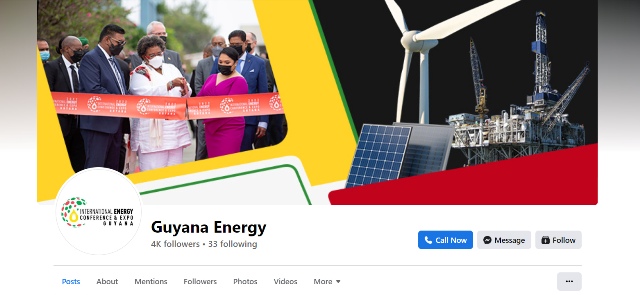 Guyana Energy on Facebook.
Guyana Energy on Facebook.
[This article is from The Round Table: The Commonwealth Journal of International Affairs.]
The Commonwealth country of Guyana is not slowing down on its energy boom. The government has said so. After a series of oil field discoveries starting in 2015, another 3 wells were discovered in April 2022, boosting Guyana’s estimated reserves to more than 11 billion barrels of oil equivalent (BOE) and 13.2 billion cubic feet of associated gas.
The economic impact is huge. In 2018 Guyana’s total government revenues were US$1.4 billion. Now the estimates, stretching to 2050, are US$50-US$200 billion. By 2025 oil production could be 750,000 barrels per day (b/d) and by 2027 more than one million b/d of oil equivalent of some of the highest value, lowest carbon crude oil in the world.
Oil boom … and bust: Guyana’s ‘carbon bomb’
Challenges facing the new Government of Guyana
Guyana: the fast rising Commonwealth petro state. What lies ahead?
With a population of just over 750,000 people, the country currently produces the equivalent of roughly 24 barrels per citizen every year. When output gets to 750,000 b/d by 2025 this could be the equivalent of 238 barrels per citizen for the year, higher than all the global current top 10 producers. If all discoveries were developed in the next 20 years, over $130 billion U.S. dollars can flow into Guyana just from the production sharing and royalty agreements alone. In the next 5 years Guyana’s GDP per capita will surpass Brazil’s.
The flip side of the coin is that five years ago, Guyana had no known oil reserves unlike its immediate neighbours. Dealing with this windfall is a new experience for the Guyanese. The pitfalls are mismanagement and the dreaded ‘resource curse’ or the ‘paradox of plenty’ where the destabilisation of traditional economic sectors occurs as the country becomes overly dependent on exports of a single commodity and inflation becomes rampant.
So, is Guyana dealing constructively with the challenges ahead? An IMF Report of 20 April 2022, sees GDP growth for Guyana of 20.4% for 2021, 48.7% for 2022, and a projected growth rate of 34.5% in 2023. Clearly, an inflationary spiral is looming. The government must exercise caution about taking on new loans and debt.
Guyana could become one of the world’s richest nations per capita. But it will not happen overnight. The population can become frustrated at the lack of any immediate tangible benefits that they may have expected from the oil revenues. So, managing public expectations is critical, or a crisis of expectations can have a negative impact on the country’s ability to meet its goals. Similarly, the possibility of political and ethnic strife is a constant threat if the benefits of the windfall are not distributed evenly among the various ethnic groups.
Clearly, attaining high-income status from natural resources wealth does not always translate into improved human development outcomes. In addition, winning oil and gas involve a long supply train, and opportunities for large scale corruption abound unless institutions are strengthened to avoid an increase in it as the flow of petrodollars enters the economy. Finally, Guyana still lacks sufficient human resources for the oil sector. Formal education and training at all levels for the work force is a priority.
The country’s political leaders have emphasised that certain services should be reserved for Guyanese procurement since the bulk of the benefits cannot just go to foreign investors. This is commendable. But just filling percentage workforce with nationals in the name of ‘local content’ is a mistake to be avoided. This is not about numbers; it’s about investing in the long-term benefits for the country and its people. So, the country will need to build its quantum of skilled technocrats across the industrial complex.
Whose Freedom at Midnight? Machinations towards Guyana’s Independence, May 1966
Guyana, its Foreign Policy, and the Path to Development
In coming late to the oil and gas family, Guyana can learn from the best practices or the mistakes of all the oil-producing countries that preceded it.
What about the future after oil and gas? Further investment in other commodities – particularly gold, rice, bauxite and sugar, spices, palm oil, cocoa, beef, and beef products – will enable the nation to diversify its economy. Investment in agriculture is a BIG item, since there is agreement among CARICOM leaders that the vast agricultural land mass of Guyana can be cultivated to become the breadbasket of the region. It is not a new idea but it is an idea whose time has come.
Overall, investment in Guyana’s future sustainability means investing long-term in assets and investing in people. Further afield, the oil and gas resources of Guyana, Suriname and Trinidad and Tobago will jointly build energy security for the CARICOM countries. These nations are very minor contributors to the global carbon footprint and climate change. But at present petroleum and natural gas is playing a key role in those economies at a critical moment for their investment in renewable and sustainable energy.
Anthony T. Bryan is Professor Emeritus of International Relations, University of the West Indies, St. Augustine, Trinidad.



